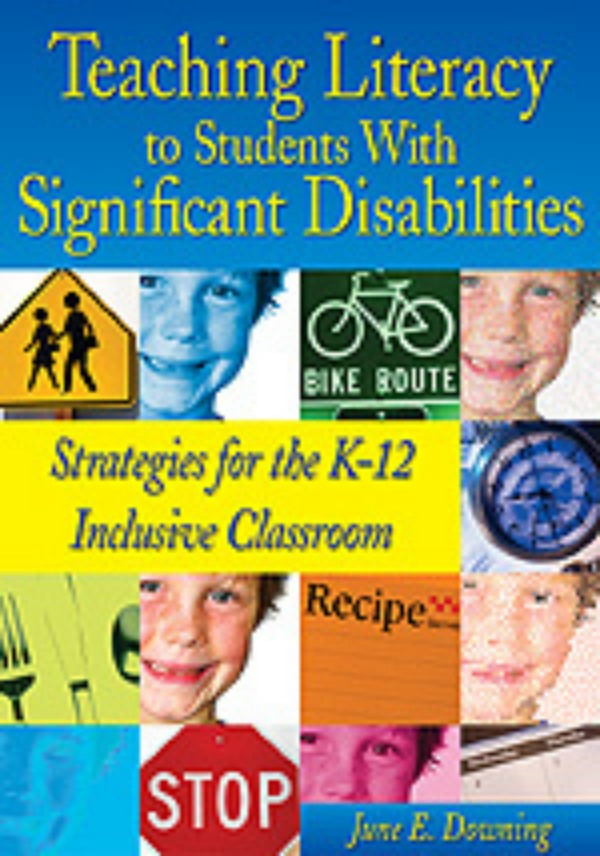Teaching Literacy to Students with Significant Disabilities: Strategies for the K-12 Inclusive Classroom
Submitted by Charlotte Cushman on Apr 01, 2012

Teaching Literacy to Students with Significant Disabilities: Strategies for the K-12 Inclusive Classroom by June Downing (2005) offers tips and practical strategies to provide meaningful literacy experiences to students with multiple disabilities. Each section includes key concepts, a summary, and frequently asked questions.
Table of Contents:
-
Literacy and a Free Appropriate Public Education
- Key Concepts
- What is Literacy?
- Literacy and Federal Mandates in Education
-
Barriers to Literacy Instruction for Students with Significant Disabilities
- Attitudinal Barriers
- Low Expectations
- Limited Opportunities
- Limited Means of Accessing Literacy
- Limted Time
- The Age Factor
-
Literacy and Quality-of-Life Issues
- Self-Esteem
- Self-Determination
- Independence
- Information Gathering
- Organization
- Learning
- Entertainment
- Why Teach Reading to Students with Severe Disabilities?
-
Literacy and Communication
- Key Concepts
- The Relationship Between Communication and Literacy
-
Building Relationships
- Reading Together
- The Benefits of Play Interactions
- Emergent Literacy for Students of All Ages
- Augmentative and Alternative Communication Devices
-
Building Shared Experiences for Literacy Development
-
Documentation of Shared Experiences
- Drawings
- Photograph Books
- Tactile Books
-
Documentation of Shared Experiences
- Summary
- Frequently Asked Questions
-
Planning Literacy Activities
- Key Concepts
-
General Considerations
- Literacy Rich Environments
-
Benefits of Learning in a General Education Classroom
- Access to the Core Curriculum
- Not Just Physical Presence
-
Identifying Literacy Goals
- What are the Literacy Goals of the Individual and the Family?
-
Determining Present Literacy Skills
- Analyzing the Environment and the Need for Literacy Skills
-
Identifying When Literacy Skills Can Be Taught Throughout the Day
- Creating Literacy-Learning Opportunities for All Ages
-
Developing Literacy Materials for Individual Students
- Age Appropriateness
-
Individual Considerations
- Physical Considerations
- Visual Considerations
- Cultural Considerations
- Interesting Materials
- High Quality
-
Assistive Technology
- Computer Access
- Summary
- Frequently Asked Questions
- Teaching Literacy Skills
- Evaluating Progress: Next Steps
- The Future for Literacy Access and Instruction

Comments
Looking for ideas